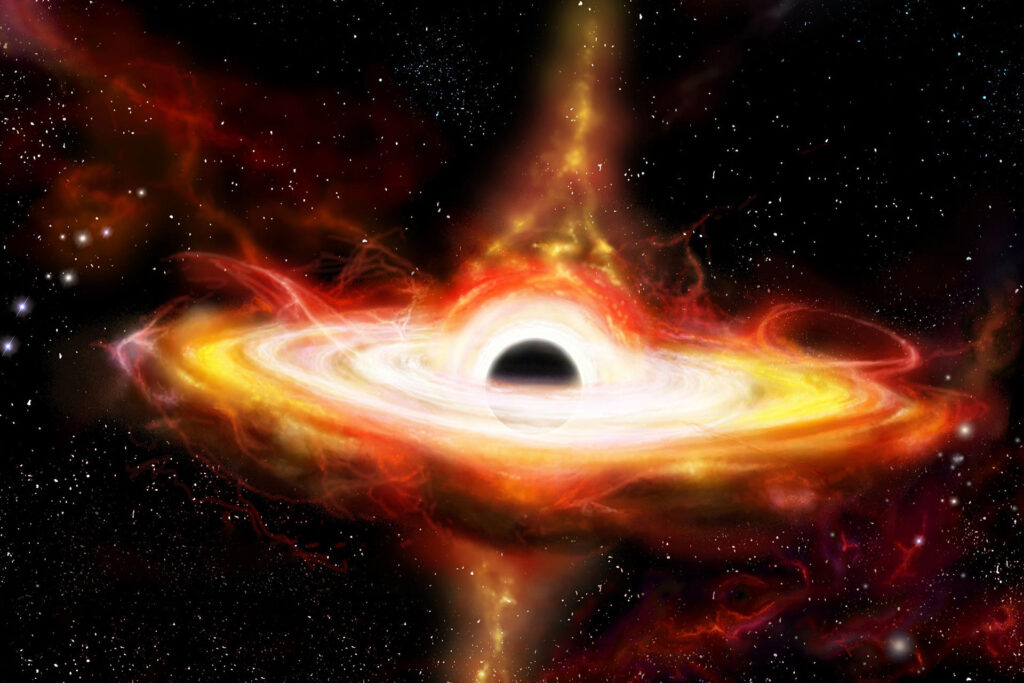Researchers also found that the supermassive black hole, which is located at a distance of 12.9 billion light-years from Earth, is consuming gas and dust around it at a high speed, or in other words, it is growing. According to Fortak:
We were very excited to receive the first data from James Webb. By examining the data received in the UNCOVEER program, three very compact red masses caught our attention. The pointy and red appearance of these objects was similar to a quasar.
Quasars form when there is a large amount of matter around a supermassive black hole. These materials form a disk of gas and dust called an accretion disk, which gradually feeds the black hole. The huge gravitational influence of the black hole causes turbulence in this matter and leads to a high temperature increase and its glow.
In addition, the matter that does not fall into the supermassive black hole finds its way to the massive cosmic poles. The particles in these regions are accelerated to speeds close to light. The release of these relativistic fountains is accompanied by the eruption of bright electromagnetic rays.
As a result, supermassive black hole-enhanced quasars in active galactic nuclei (AGN) are often very bright, even outshining the total luminosity of their host stars and galaxies. Much of the radiation emitted from around the supermassive black hole appeared in James Webb’s data over a short period of time. According to Rachel Besanson, one of the authors of the UNCOVER program:
Color analysis of this object shows that it is not an ordinary star-forming galaxy. This evidence is more consistent with the supermassive black hole hypothesis. Based on the compressed mass, it was clear that this object was a supermassive black hole, although it differed slightly from other early quasars.



